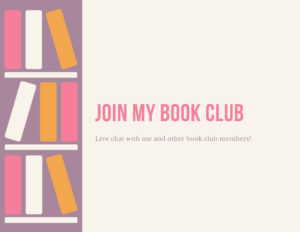Guest Post by Caroline Burau
Self-publishing: The good news is, it’s all you! And the hard part is, it’s all you.
Having my memoir, Answering 911: Life in the Hot Seat picked up by a well-respected publisher in 2006 was a huge thrill. I signed a contract, finished my first draft, and immediately the wheels started turning.
During the six months leading up to publication, someone other than me did a whole slew of things I didn’t fully appreciate at the time. A gorgeous cover was designed, drafts of the book were edited multiple times (some with, some without my input), advanced copies were sent out to numerous media outlets for reviews, and respected authors were picked to provide blurbs. As if this wasn’t enough, about a month before the release date, a lovely young lady name Jana called me and introduced herself as my publicist. My publicist? I have a publicist? Jana took care of booking readings, signings, radio, newspaper, and TV interviews.
In short, I wrote a book, participated in the editing process, then basically made sure I showed up when and where I was told to go. The pace got somewhat rigorous, and I fought my own nerves at every single appearance, but it was a wonderful ride that I know many writers would kill to experience.
And then it was over. One day, I called Jana about a request I’d gotten for a reading at a local library and she broke the news: “I’m not your publicist anymore.” I was aghast! But it was nothing personal. My time was up; she was on to the next new title.
Over the years, I continued doing occasional readings and appearances for Answering 911. In 2011, I completed a novel, Sugarfiend, and hoped that my status as a published author would give me an advantage. After querying more than two dozen agents and getting little to no response, I felt like giving up.
Novels, I was told, are more numerous and therefore harder to sell than memoir or nonfiction. I would have to be patient. I’m not big on being patient. Self-publishing seemed the logical choice.
And it’s been great . . . but it’s been slow. Why? Because I’m it. I’m the writer, editor, cover designer, marketing department, publisher, and publicist. If it wasn’t for my husband’s technical know-how and marketing background, I might truly be overwhelmed.
To start, I had to get over my biggest fear: that because the book hadn’t been picked up by a “real” publisher, it wasn’t any good. But over the course of four meticulous full edits, I at last reached a point where I not only liked Sugarfiend, but enjoyed it. That’s when I knew it was ready.
From there, I formatted the book for three different self-publishing formats: Kindle, Nook, and CreateSpace (for the trade paperback.) It was time-consuming and taxed my scant technical know-how. (Again, husband! To the rescue.)
Now that the book is available, the responsibility of getting the word out is all mine. Media outlets tend to look askance at self-published works. They get a lot of queries from people looking for publicity, and without a reputable publisher’s seal of approval, it’s hard to get them to pay attention.
So, while my royalties are much higher with my self-published book (70-50 percent versus 10 percent or less with a traditional publisher) the number of units sold will inevitably be much lower. But thanks to the power of social media, newspapers, radio, and TV no longer hold a monopoly on information. Plenty of self published authors have used Facebook, Twitter and other outlets to drum up huge word of mouth.
To get the word out, I now blog regularly for www.women.com and as a guest blogger for anyone who will have me (like this awesome site). It’s fun, and it keeps my writing chops up. I stick to sites where I think my target audience will find me: women, sugar “addicts”, and lovers of humorous fiction. I also hired a web designer to set up my own author blog and web site (www.carolineburau.com) a central location for fans to check out both books, read updates, and link to my social media pages.
In short, the great part is that it’s all up to me. And the hard part is that it’s all up to me.
It’s too soon to tell whether I made the right choice. I still entertain fantasies of Sugarfiend getting the attention of some big exec at Penguin, getting signed to a 50,000-unit first-run, then being adapted for a major motion picture (which I’ve already decided must star Kat Dennings.)
But mostly, I’m glad I can say to fans of my first book and anyone else who asks, that Sugarfiend is out there and ready for the world to enjoy. And I didn’t wait for anyone’s nod of approval. I did it for myself.
Caroline Burau is a freelance writer in White Bear Lake, Minnesota, and author of Sugarfiend http://www.amazon.com/Sugarfiend-ebook/dp/B0071BFKOW/ref=sr_1_2?ie=UTF8&qid=1328076456&sr=8-2 and Answering 911: Life in the Hot Seat. http://www.amazon.com/Answering-911-Life-Hot-Seat/dp/0873516028/ref=sr_1_1?ie=UTF8&qid=1328076456&sr=8-1
You can also follow her on Twitter (@carolineburau)

